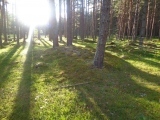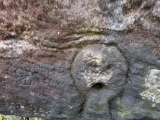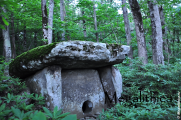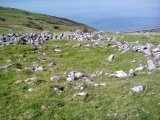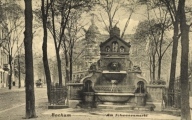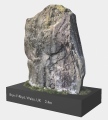Andy Burnham's Blog, page 187
September 27, 2020
Hæreidsmoen
West Norway's largest barrow cemetery, in Hordaland Hæreidsmoen. Consisting of over 400 burials, most of them cairns it is located in a very beautiful high natural plateau in the innermost part of Hardanger fjord. The cemetery is divided into two parts, Sjohaugen to the north west and Hereid to the south east. The site has with information posters and several walking paths giving is the appearance of a public park.
Published on September 27, 2020 04:21
September 25, 2020
Auld Wives Lift
Sandstone boulders on Craigmaddie Muir near Milngavie with a long history and embedded folklore. Has what are now thought to be ancient carvings (Celtic heads) but also has modern and Victorian graffiti. There sre fantastic views from the top of the ridge looking north and south. Definitely worth a visit, with other sites nearby.
Published on September 25, 2020 05:22
September 21, 2020
Dolmen Solо́niki ridge 2
This dolmen is located in a hard-to-reach remote place, on a mountain ridge, in the Lazarevsky district, Russia. In this place there are two dolmens of different architectural types. Both are well preserved.
Published on September 21, 2020 05:53
Cwmberwyn Camp
The remains of a defended enclosure in Powys, which probably dates to the Iron Age. Cwm Berwyn Camp occupies a south-eastward facing promontory and is protected by very steep natural slopes on the east, south and west, and by artificial defences running across the saddle at the north and north-west.
Published on September 21, 2020 05:13
September 16, 2020
Venta Icenorum
Dig post excavation confirms "one of the largest" temple buildings in Roman Britain, full details in the comments on our page, along with what there is to see now at Venta Icenorum. Venta Icenorum was the capital of the powerful and independent Iceni tribe. The Iceni inhabited the flatlands and marshes of Norfolk and earned immortality for their revolt against Roman rule under their queen Boudica (or Boadicea) in the winter of AD61.
Published on September 16, 2020 09:13
Bryn Seward Settlement
The settlement is situated on two levels and divided by a country lane. The majority of the site being to the North West of the road. To the north west on an upper level there are a series circular buildings (two adjoined) and stone piles connected by dry stone walling. To the West on a lower level is an oval enclosure that has the remains of a couple of adjoined hut circles. On the opposite side of the road are the remains of three or more hut circles with a 4m diameter. One of the huts being more oval than round.
Published on September 16, 2020 08:58
Schwanenmarkt Brunnen
Saint Suitbert came to the Ruhr area in the late 7th century, after he was active as a missionary in Frisia. He wanted to convert the Bructeri, a pagan Germanic tribe, to Christianity. For this reason, he rededicated the holy well of the Bructeri to a Christian sacred spring. The well was destroyed by British bombs in 1944, along with most of the city centre of Bochum.
Published on September 16, 2020 08:26
Book review: Megalithic Finds in Central Celebes by Walther Kaudern 1917-1920
With progress in digitization, the internet has enabled easy access to very old and unique books. This book review looks at the book: Megalithic Finds in the Central Celebes: Results of the Authors expedition to Celebes 1917-1920 by Walther Kaudern. Mr Kaudern was a Swedish zoologist and ethnographer traveling Sulawesi (an Island now part of Indonesia) in the last century.
Published on September 16, 2020 06:53
Bryn-Y-Rhyd
A 3D capture of the Bryn-Y-Rhyd stone, link in the comments on our page. A greyish-red standing stone in Carmarthenshire, about 2.4m high.
Published on September 16, 2020 04:35
September 15, 2020
Carneddau Hill Stone
A standing stone 1.8m high, by 1.1m by 0.4m. On the east face are four oval depressions, which have been interpreted as cup marks but Coflein archaeologists reckon they are not convincing. They think the marks were more likely made in recent centuries, perhaps attempting to use the stone as a gatepost.
Published on September 15, 2020 04:27

